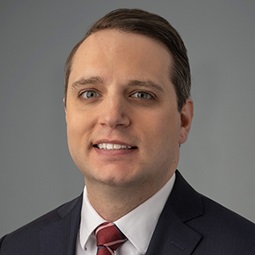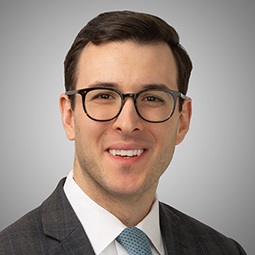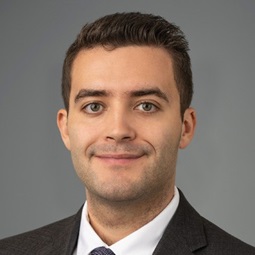Contributed by Jessica Diab
In this day and age, there’s not much appetite for the artificial (whether it be artificial sweetener or feigned affection). We want our food, relationships, and clothing to be authentic and legitimate. Unfortunately, as demonstrated by a recent decision from the Sixth Circuit Court of Appeals, artificiality still manages to creep into certain chapter 11 plans and courtrooms in the form of “artificial impairment.” Artificial impairment refers to a scenario whereby a debtor, which may otherwise be capable of satisfying a class of claims in full, proposes to impair the claims in that particular class (quite often, only ever so slightly) in order to contrive an “impaired accepting class” for purposes of section 1129(a)(10) of the Bankruptcy Code. Section 1129(a)(10) states that a plan can only be confirmed when at least one class of claims that is impaired under the plan has voted to accept the plan. In Village Green I, GP v. Fed. Nat’l Mortg. Assoc’n, the Sixth Circuit considered the appropriate legal framework for addressing allegations of artificial impairment and whether such allegations should be addressed under section 1129(a)(10) or section 1129(a)(3) of the Bankruptcy Code, which requires that a plan be proposed in good faith. Read on to find out the answer!
Facts
This case involved a chapter 11 case filed by Village Green I, GP, the owner of a 314-unit apartment complex in Memphis, Tennessee, to stop foreclosure proceedings threatened by its secured creditor, the Federal National Mortgage Association (“Fannie Mae”). As of the petition date, Fannie Mae was owed approximately $8.6 million, the building itself was worth approximately $5.4 million, and the building was Village Green’s only asset. Village Green had only two other creditors: its former lawyer and its former accountant with unsecured claims of $1,629.97 and $752.50, respectively. Village Green proposed a chapter 11 plan with the following terms:
- Class 1 consisted of Fannie Mae’s secured claim in the stipulated amount of $5,400,000.00. The plan proposed to pay Fannie Mae deferred cash payments at an interest rate of 5.4% per annum in equal monthly installments for a term of one hundred and twenty months, based on an amortization period of thirty years from the effective date of the plan. The plan anticipated a balloon payment obtained through refinancing at the conclusion of the ten-year repayment period.
- Class 2 consisted of the general unsecured claims of Village Green’s lawyer and accountant, which Village Green proposed to pay in two equal installments. The first installment would be due thirty days from the plan’s effective date and the second installment would be due sixty days after the plan’s effective date. The sixty day delay in payment meant that these claims were impaired under the plan.
- Class 3 consisted of Fannie Mae’s unsecured deficiency claim which Village Green proposed to satisfy with deferred cash payments equal to its allowed unsecured deficiency claim at a market rate of interest of 5.4% per annum from and after the effective date. The Plan provided for a balloon payment of approximately $6.64 million at the conclusion of the ten-year repayment period.
The bankruptcy court confirmed Village Green’s chapter 11 plan. What followed was a back and forth between the district court and bankruptcy court which is briefly summarized here for those who are interested (we need to get to the Sixth Circuit’s decision!).
The Sixth Circuit’s Analysis of Artificial Impairment
The Sixth Circuit directly reviewed the bankruptcy court’s determinations of whether the chapter 11 plan satisfied sections 1129(a)(10) and 1129(a)(3).
In considering whether the plan satisfied section 1129(a)(10), the Sixth Circuit noted that a determination of whether a class is impaired for purposes of section 1129(a)(10) is a strict analysis that considers only whether the plan “leaves unaltered the legal, equitable, and contractual rights to which such claim or interest entitles the holder of such claim or interest.” Notably, the Sixth Circuit held that an analysis under section 1129(a)(10) should not consider the motives behind the impairment and should look strictly to the treatment of the claimant under the plan. On these facts, Village Green’s plan undisputedly altered the rights of the lawyer and accountant because those claimants were legally entitled to payment immediately rather than in two installments over 60 days. Therefore, Class 2 constituted an “impaired accepting class” for the purposes of satisfying section 1129(a)(10).
The Sixth Circuit held that a debtor’s motives regarding impairment, including considerations of whether a class of creditors has been artificially impaired for the purposes of contriving an impaired accepting class, are more appropriately addressed under section 1129(a)(3) of the Bankruptcy Code, which requires that a plan be proposed in good faith. The Sixth Circuit determined that Village Green’s plan was not proposed in good faith. The Sixth Circuit was not persuaded by Village Green’s argument that it was economically justified in “rationing every dollar” under the plan and thus impairing the claims of its lawyer and accountant. Village Green’s own projections submitted in support of the plan’s feasibility (i.e., whether Village Green would be able to service its debt on a going forward basis), showed that Village Green would earn roughly $857,000 in net operating income during the first year after the plan’s confirmation. This income rendered “dubious at best” Village Green’s assertion that it could not safely pay off the unsecured claims of the lawyer and accountant up front. The Sixth Circuit also found that the close alliances between Village Green, its accountant, and its lawyer, and the fact that the accountant and lawyer rejected Fannie Mae’s offer to pay them in full, suggested certain bad faith acts between Village Green and these creditors in an effort to circumvent the purposes of section 1129(a)(10).
Conclusion
The Sixth Circuit’s decision is noteworthy, as it provides legal practitioners with the correct framework for building a case for or against allegations of artificial impairment. The Sixth Circuit does not, however, provide certain debtors with few creditors and assets, such as Village Green, with a way around what, at times, may feel like a legal necessity to artificially impair. On these facts, it is unlikely that Fannie Mae would have agreed to any treatment other than the right to foreclose on the property. Absent proposing a plan that would do just that, Village Green could only confirm a plan by separately classifying and artificially impairing the two remaining general unsecured claims in order to satisfy section 1129(a)(10). It begs the question of whether, in some circumstances, we might be better off with a bit of artificiality!
Jessica Diab is an Associate at Weil Gotshal & Manges, LLP in New York.














